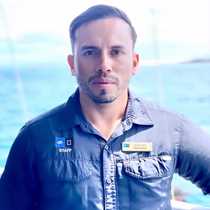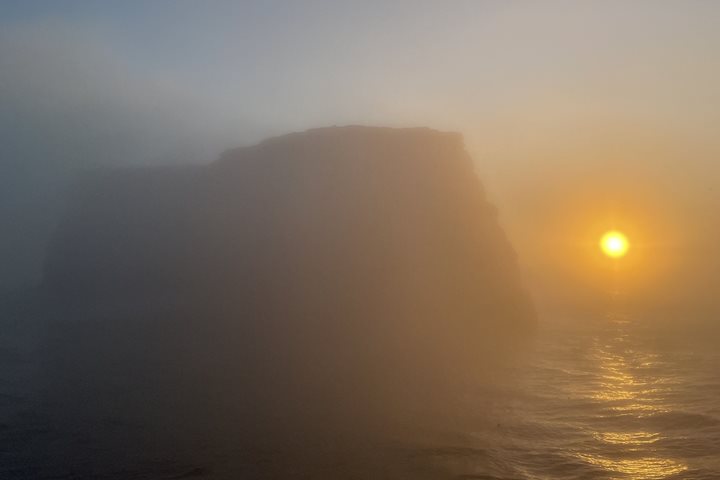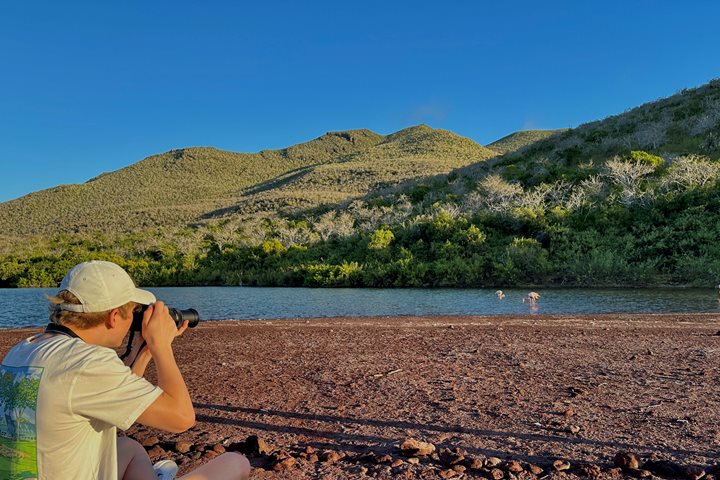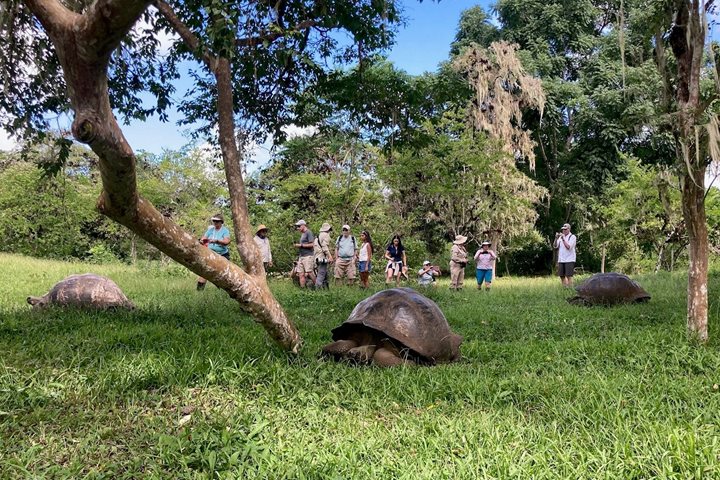Early in the morning, we made a dry landing on North Seymour Island. We observed an incredible amount of wildlife during a hike. Land iguanas are some of the major herbivores on this small, uplifted island. Birds were flying everywhere. Blue-footed boobies returned from fishing, and frigatebirds soared in the sky and nested all over the trail. We spotted small chicks waiting for adults to return with food.
We observed a small colony of sea lions resting on the white sandy shores. Some of us got extremely lucky and found a central Galapagos racer, a species of snake that is endemic to the Galapagos. We spotted a few species of Darwin’s finches, yellow warblers, and a few blue-footed boobies nesting along the trails. Some of us chose to go on a Zodiac ride along the shores of North Seymour. We encountered several fur seals (truly a type of sea lion), blue-footed boobies perched on the rocks, and plenty of magnificent frigatebirds nesting on the bushes.
During the afternoon exploration, we went deep water snorkeling along the coast of Rábida Island. This is the red island, and it is full of life. Some of us spotted a couple of whitetip reef sharks. Galapagos sea lions played with us in the water, and we observed various species of fish.
After snorkeling, some of us opted to go kayaking along the coast of Rábida, while others went on a walk along the beach. During the walk, we spotted several American flamingos feeding in a brackish water lagoon behind the mangroves. After a beautiful sunset on this incredible expedition day, we returned to National Geographic Islander II.







